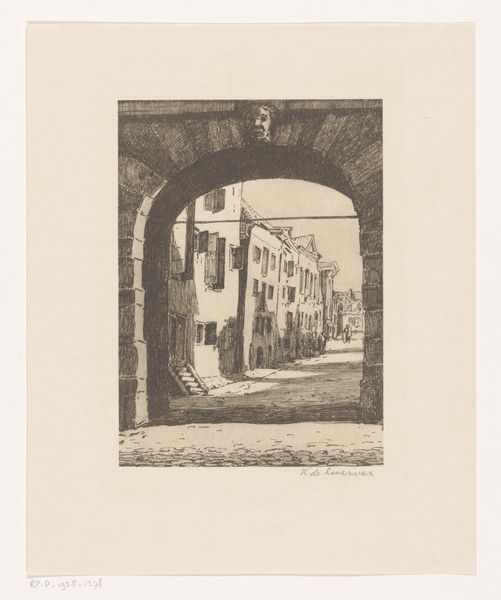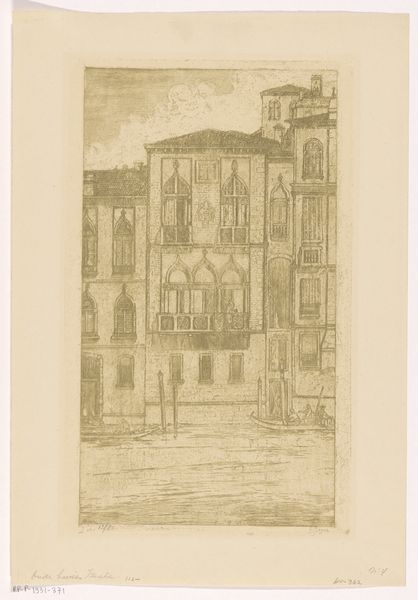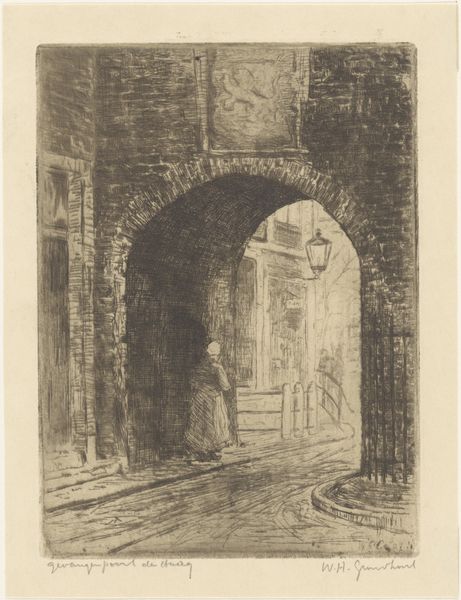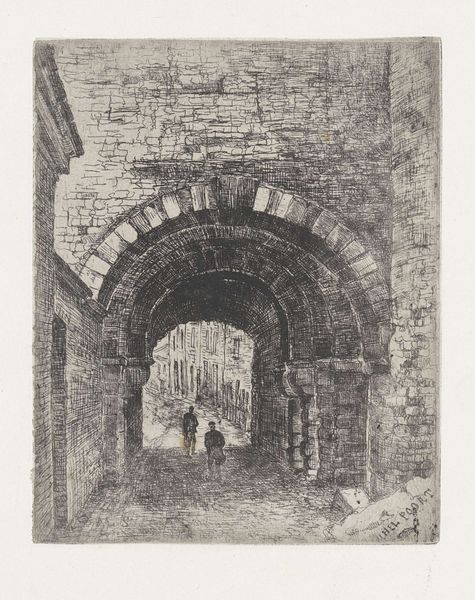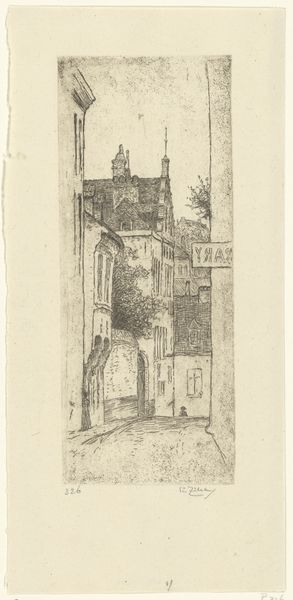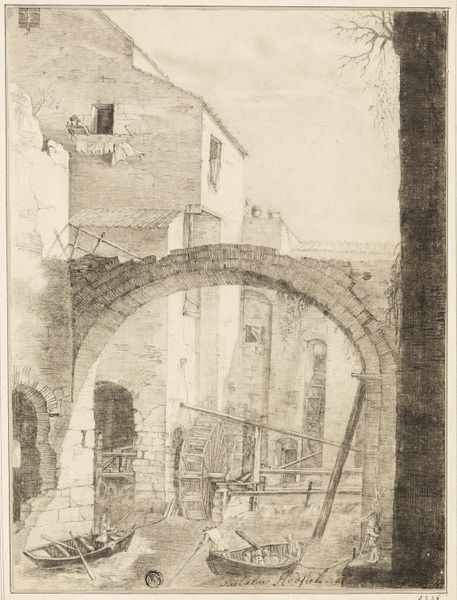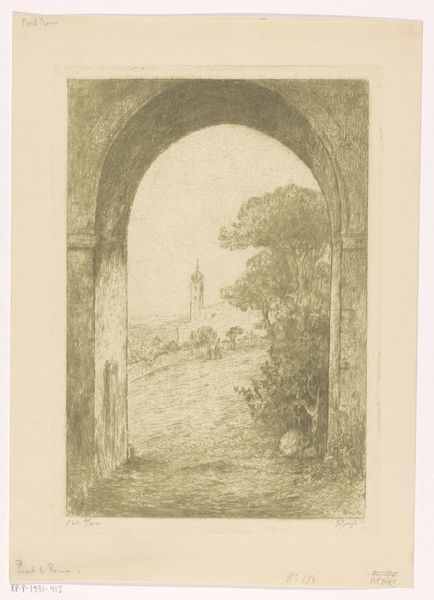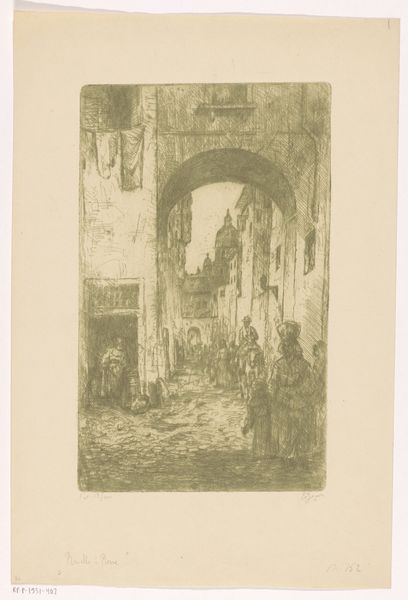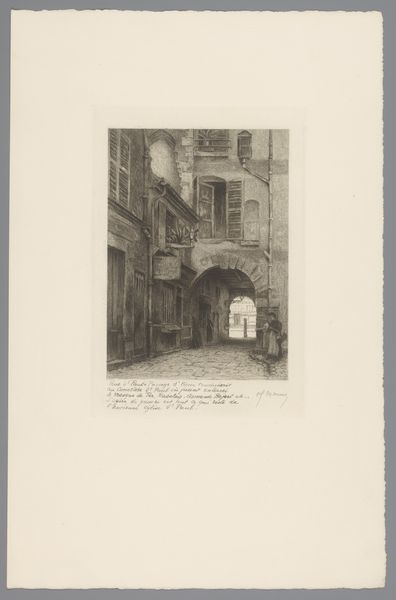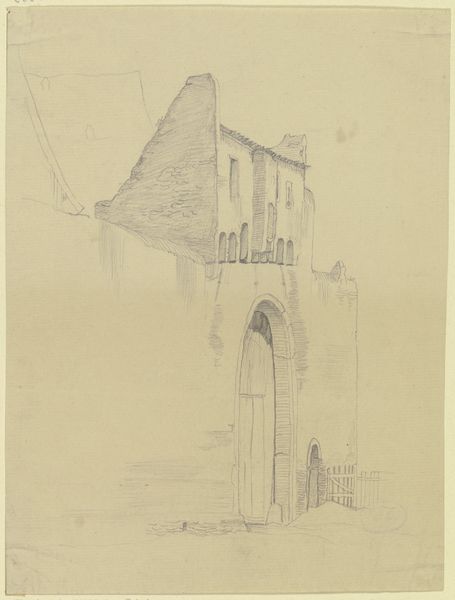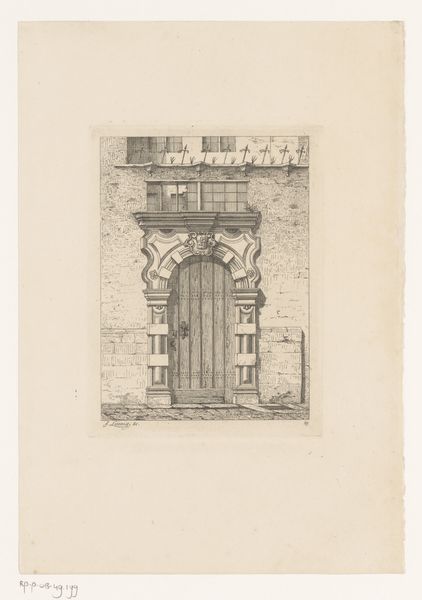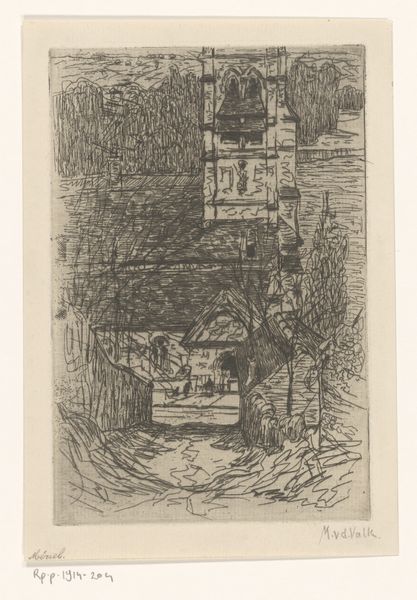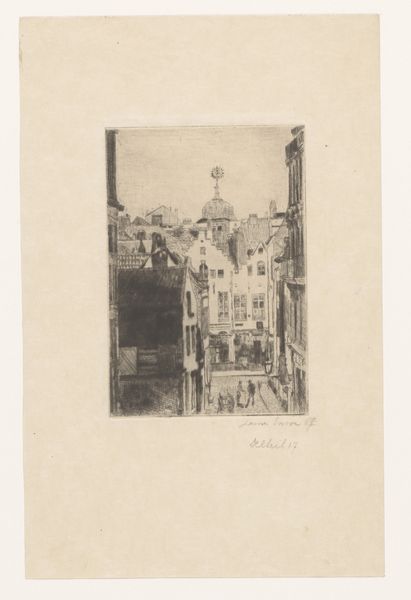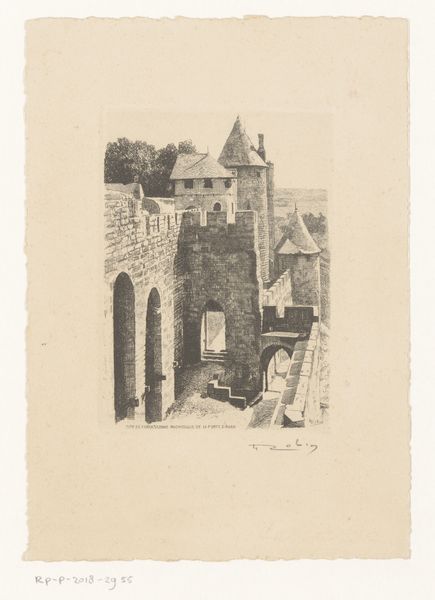
drawing, print, etching
#
drawing
#
aged paper
#
toned paper
#
light pencil work
#
dutch-golden-age
# print
#
etching
#
pencil sketch
#
old engraving style
#
sketch book
#
neo-impressionism
#
landscape
#
personal sketchbook
#
ink colored
#
sketchbook drawing
#
cityscape
#
sketchbook art
Dimensions: height 96 mm, width 72 mm
Copyright: Rijks Museum: Open Domain
Curator: There’s something undeniably captivating about this understated etching by Wijnand Otto Jan Nieuwenkamp, dating back to 1897. It's entitled "Oostpoort in Delft." Editor: Immediately, I’m drawn to its atmosphere. A certain melancholic feeling pervades it; perhaps it's the limited tonal range and the way the scene is rendered in subtle, scratchy lines, evoking a sense of transience. Curator: Yes, Nieuwenkamp employed a technique reminiscent of the Dutch Golden Age masters, combined with elements of Neo-Impressionism. He presents the Oostpoort, the eastern gate of Delft, not just as architecture but as a participant in daily life. Note the figure standing just beyond the archway. Editor: That figure! Is she meant to be faceless? The stark contrast of her simple form against the detailed gate emphasizes her humanity while simultaneously obscuring her individual identity. It really makes one wonder about the role of individuals in shaping the spaces around them, or vice versa. Curator: Indeed. Gates are always interesting symbols of transition, checkpoints, and social division, but here, the etching flattens everything. By rendering everything in soft ink, Nieuwenkamp emphasizes its historic presence in Delft. Notice how the brickwork and wooden palisades also seem worn. Editor: It speaks volumes, doesn't it? We can feel the passage of time, and I think Nieuwenkamp's success resides in making the monument equally about both what exists materially and the history surrounding it. Its monochromatic color palette brings gravitas and perhaps alludes to old documents. The gate is part of Dutch memory. Curator: I agree completely. And, you know, I initially underestimated this small-sized etching. Its intimate scale, I realize now, draws the viewer closer, encouraging a more contemplative experience. It isn't necessarily monumental in size, but it carries monumental weight! Editor: Exactly. It whispers stories of Delft's past, its defenses, its people… I'm struck by the way it makes us consider the relationship between permanence and change, the individual and the collective, through this single, carefully chosen vista. Curator: Yes. And that contrast is so strong because we recognize that time does not stand still—not for us and certainly not for the Oostpoort, whether we look at it today or reflect on Nieuwenkamp’s late 19th-century perspective.
Comments
No comments
Be the first to comment and join the conversation on the ultimate creative platform.
